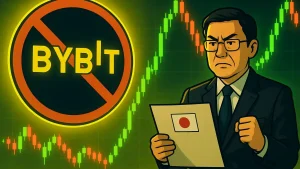Corporate Balance Sheets Discover Zero-Knowledge Proofs
Zcash is changing hands at roughly $470 after a 37 % intraday swing that
took the token from a moon-shot peak of $723 to a hard floor below $460.
The catalyst was a landmark announcement from Cameron and Tyler Winklevoss, who
steered the Nasdaq-listed biotech firm Leap Therapeutics through a
rebrand into Cypherpunk Technologies and immediately seeded the
company’s balance sheet with 203 775 ZEC. The $50 million purchase,
executed at an average price of $245, establishes the world’s first
Digital Asset Treasury dedicated to a privacy coin and echoes
the corporate-treasury playbook that made Bitcoin a headline asset in 2020.
New chairman Khing Oei and chief investment officer Will McEvoy
frame the move as a “value-aligned, multi-decade thesis” on the importance of
financial privacy. Whereas MicroStrategy sought a hedge against fiat
debasement, Cypherpunk is positioning ZEC as “encrypted Bitcoin”—
a direct appeal to institutions unnerved by rising on-chain
surveillance and the growing compliance footprint faced by public blockchains.
Early market reaction has been intense.
Spot exchanges logged the highest 24-hour ZEC volume since 2018,
while derivatives desks liquidated more than $50 million in short positions
during the surge above $700. Even so, the token remains down
85 % from its 2016 launch high of $3 191, underscoring how
thin liquidity can amplify moves when fresh corporate capital appears.
Technical Crossroads: Impulse Exhaustion or New Wave?
Two-hour charts display a textbook five-wave impulse beginning at $300
and topping near $750, followed by a sharp three-wave ABC retracement to
a low of $429. That corrective low coincides with the 0.618 Fibonacci
retracement of the entire September–November advance—an area often watched
for wave-two completion in Elliott theory. The relative-strength index has
cooled to 39, removing acute overbought pressures and leaving the door
open to a renewed advance should buyers reclaim
descending resistance at $500.
A decisive break above that trendline—ideally on expanding
volume—would validate a new motive wave that projects
toward psychological resistance at $1 000.
Conversely, failure to hold the
$440–$420 congestion zone exposes a deeper retest of the
summer breakout range around $350, a level where open interest
remains sparse and downside bids are thin.
Beyond ZEC: The Privacy Renaissance and Gamified Mining Experiments
While zero-knowledge assets capture institutional imagination, retail
interest in privacy is also accelerating.
Industry trackers report nearly four million ZEC now sit in shielded
pools, and privacy-layer protocols such as Railgun are routing more than
$200 million in monthly value. Even prominent traders like
Arthur Hayes have urged users to withdraw ZEC from centralized exchanges
to preserve its privacy guarantees—an admonition rarely voiced for
mainstream coins.
The theme is rippling into adjacent niches. Start-ups are fusing
“mine-to-earn” mechanics with meme culture, allowing players to
assemble virtual server rooms, upgrade hash-power NFTs and earn
deflationary tokens that mirror real-world block-reward dynamics.
One such project has quietly raised more than $2 million in its presale,
burning 70 % of tokens spent on in-game upgrades to engineer
persistent scarcity. Though experimental, these models
illustrate how privacy narratives, gaming incentives and token
economics are converging ahead of what many traders
expect to be a broad alt-season in 2026.
For now, all eyes remain on whether Cypherpunk Technologies’ bold entry
transforms Zcash from a niche cypherpunk asset into the next corporate
balance-sheet darling—or if the weekend’s volatility proves that
privacy, by design, still travels a bumpier road than its transparent
counterparts.




